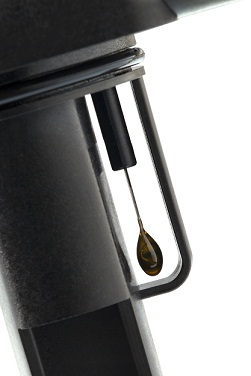The most common type of mass air flow (MAF) sensor is located inside the intake air duct between the air filter and the throttle body. Also known as the plug-in hot wire type, it consists of a heating resistor, an intake air temperature measurement resistor, an intake air temperature sensor and a control circuit.
To measure the volume of air entering the engine, some of the intake air from the air cleaner is bypassed into the hot-wire measurement area, where the volume of air intake is measured. This measurement is converted to a proportional voltage in the control circuit before being sent back to the ECU to calculate the amount of engine intake air volume.
At the same time, the intake air temperature sensor takes a measurement and sends it to the ECU to tell it how hot or cold the air is. The ECU can then judge the air density and correct the quantity of fuel injection.

























































